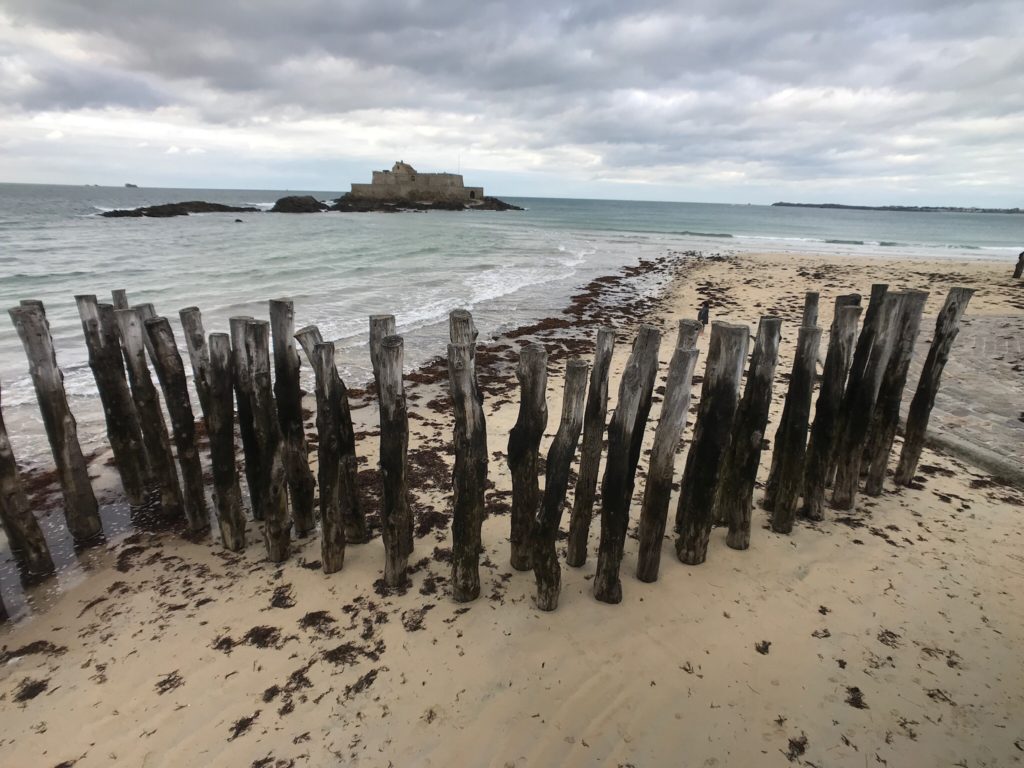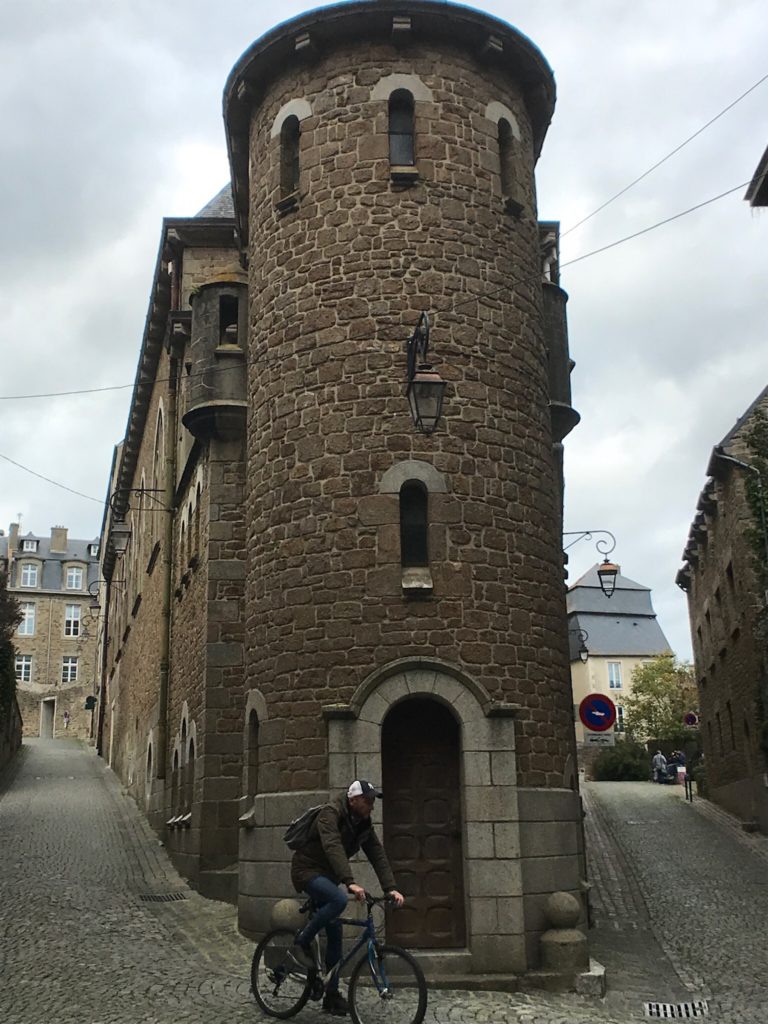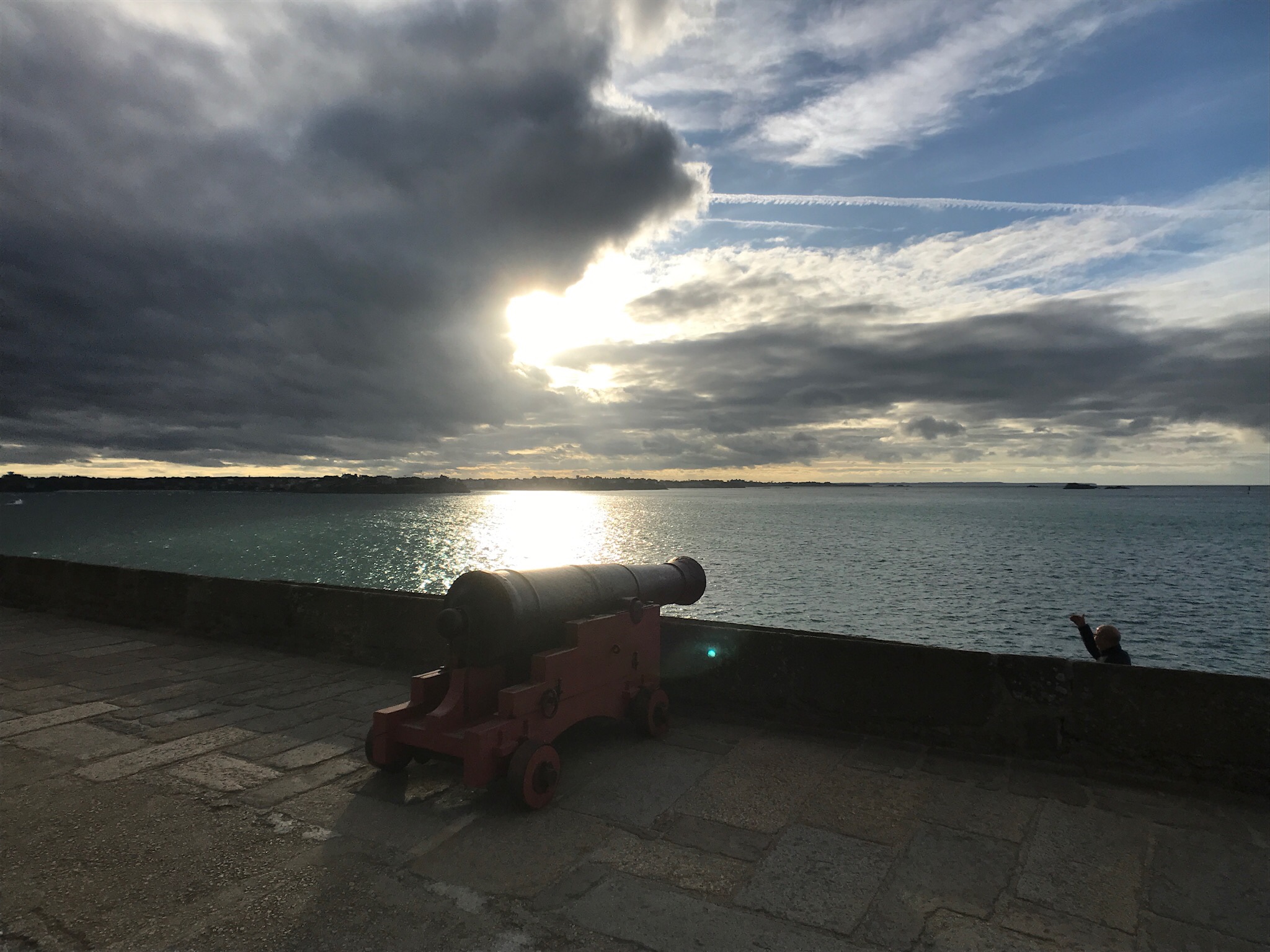11 October 2019

I may have left my tears in Normandy, but I definitely left my heart in Saint-Malo.
I drove past it’s huge port with fishing boats, yachts and catamarans, but once over their hydronic lift bridge, Saint-Malo begins to shine. Saint-Malo is an historic French port in Brittany on the Channel coast. On a clear day, I can see the south coast of the Normandy peninsula. And there are plenty of opportunities to gaze out over their turquoise and blue waters doing just that. The Malouins are lucky people.
Not all is sandy seashores, balmy breezes and cozy cafes.
The Gauls recognized a well-placed promontory and settled the town in the 1st century BC, and by the 4th century, there were major forts and fortifications built.
Saint-Malo remains a walled and heavily fortified city with a long history of piracy, earning much wealth from local extortion and overseas adventures. The pirates of Saint-Malo not only forced English ships passing up the Channel to pay tribute but also plundered elsewhere. Statues honor some adventurous corsairs, like Jacques Cartier who sailed down the Saint Lawrence River and is credited as the discoverer of Canada.

Always a feisty and independent populous, in 1590 they briefly declared themselves to be an independent republic, taking the motto “not French, not Breton, but Malouin.”
In 1944, Allies bombed Saint-Malo, which was garrisoned by over 12,000 German troops. During heavy fighting in late August and early September, the city was almost totally destroyed by American shelling as well as British naval gunfire. On 13 August, the walled city was on fire and a short truce was called allowing civilians to flee. Germans refused to surrender, fortifying their position within the citadel. Bombing and infantry battles resumed until only the citadel remained. Surrounded by American artillery and under air attack, the Germans surrendered on the afternoon of 17 August.
Thankfully, the historic city was rebuilt between 1948 to 1960. Today, Saint-Malo’s population swells by 50% each summer as tourist come to shop, bask in the sun and relax. In fact, Saint-Malo is the most visited place in Brittany.

There are several interesting sites to visit, including Château of Saint-Malo, part of which is now the town museum; the Solidor Tower which houses nautical instruments, displays tracing the history of voyages around Cape Horn, and little bits that sailors brought back from foreign ports; and the tomb of François-René de Chateaubriand who, legend says, thought of himself as the greatest lover, the greatest writer, and the greatest philosopher of his time, and on top of those accolades, it is said the steak is named in honor of Chateaubriand who liked to eat his wrapped steak in that manner. His tomb is across the aqua waters on Grand-Bé.
The 12th century Saint-Malo Cathedral is dedicated to St. Vincent and its Norman square tower and spire dominates the skyline. The cathedral suffered damage during WW2 when the steeple toppled and the 1893 organ was destroyed. Restoration was completed in1972, after twenty-eight years of work.
However, the most enjoyable experience is climbing the stairs to the walled fortifications and walking the circumference of the city. Explore the gates, especially the beautiful Great Gate. Gaze out over the sea and the small islands of Grand-Bé and Petit-Bé.

And for sure, be atop the western bastions in the evening for the sunsets. You too will leave your heart here.
0 Comments